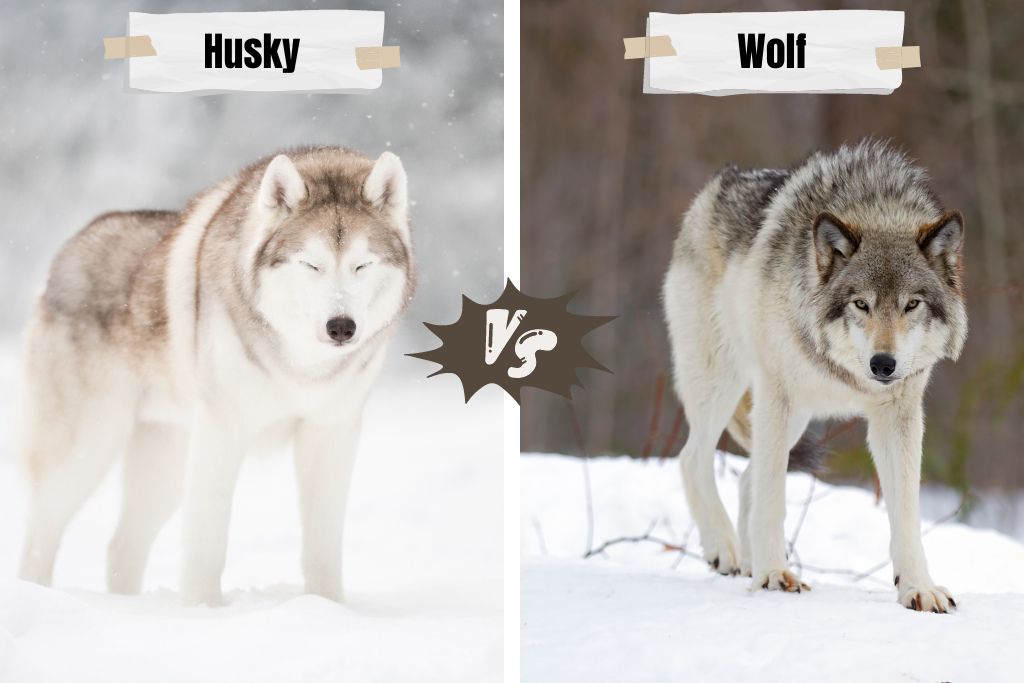
In the vast and diverse world of canine breeds, the Siberian Husky often stands out, captivating onlookers with its wolf-like appearance.
At a cursory glance, the resemblance between this popular breed and the wild, enigmatic wolf is undeniable. This has led many to ponder: just how closely related is the Siberian Husky to the wolf?
The rich tapestry of history, evolution, and biology weaves an intriguing narrative about these two animals. Both the Siberian Husky and the wolf have played pivotal roles in human history, one as a loyal companion and workhorse in frigid terrains, the other as a symbol of the wild, representing both fear and admiration.
As we embark on this exploration, we’ll uncover the layers of truth and myth surrounding the relationship between the Siberian Husky and the wolf, diving deep into their shared ancestry and the distinctive traits that set them apart.
| COMPARISON | ||
|---|---|---|
| Siberian Husky | Wolf | |
| Habitat | Worldwide | North America, Eurasia, North Africa |
| Weight | 35 - 60 pounds | 60 - 145 pounds |
| Height | 20 - 23.5 inches | 26 - 32 inches |
| Size | Medium | Large |
| Life Expectancy | 12 - 14 years | 6 - 8 years |
Husky vs. Wolf: Historical Background and Evolution
Siberian Husky
The Siberian Husky’s roots trace back to the icy expanse of Siberia, located in northeastern Russia. The breed owes its origins to the Chukchi people, an indigenous tribe that depended heavily on these dogs for transportation and companionship.
To the Chukchi, the Siberian Husky wasn’t merely a pet but an indispensable part of their daily lives. Over numerous generations, these dogs were selectively bred for traits like endurance, strength, and temperament, making them exceptionally skilled at pulling sleds over vast distances without quickly succumbing to fatigue.
As time went on and human migration patterns shifted, so did the spread of the Siberian Husky’s lineage. They were introduced to North America in the early 20th century, primarily due to their potential in sled dog racing and their growing popularity as a unique and resilient breed.
Key Takeaways:
- Originated in Siberia with the Chukchi people.
- Bred primarily for endurance and sled-pulling capabilities.
- Introduced to North America in the early 20th century.
Wolf
Stretching back far deeper into history than any domestic dog, the wolf’s narrative spans regions from North America to Eurasia.
These magnificent creatures have been part of our ecosystem for millions of years, occupying the role of apex predators, essential for maintaining ecological harmony. Human-wolf interactions are layered, characterized by a blend of respect, fear, and occasional confrontations.
All modern dogs, including the Siberian Husky, share a common ancestor with the gray wolf. It’s believed that this divergence is estimated to have taken place between 20,000 to 40,000 years ago when early humans initiated the domestication of wolves, setting the foundation for the vast array of dog breeds we recognize today.
In contrast to the Siberian Husky’s domestic evolution, the wolf’s journey has been a testament to wild adaptation. They’ve maneuvered through diverse landscapes, weather extremes, and the challenges thrown by nature and the expanding human footprint.
Key Takeaways:
- Apex predators with a history spanning millions of years.
- Common ancestor to all modern dog breeds.
Comparing Physical Characteristics
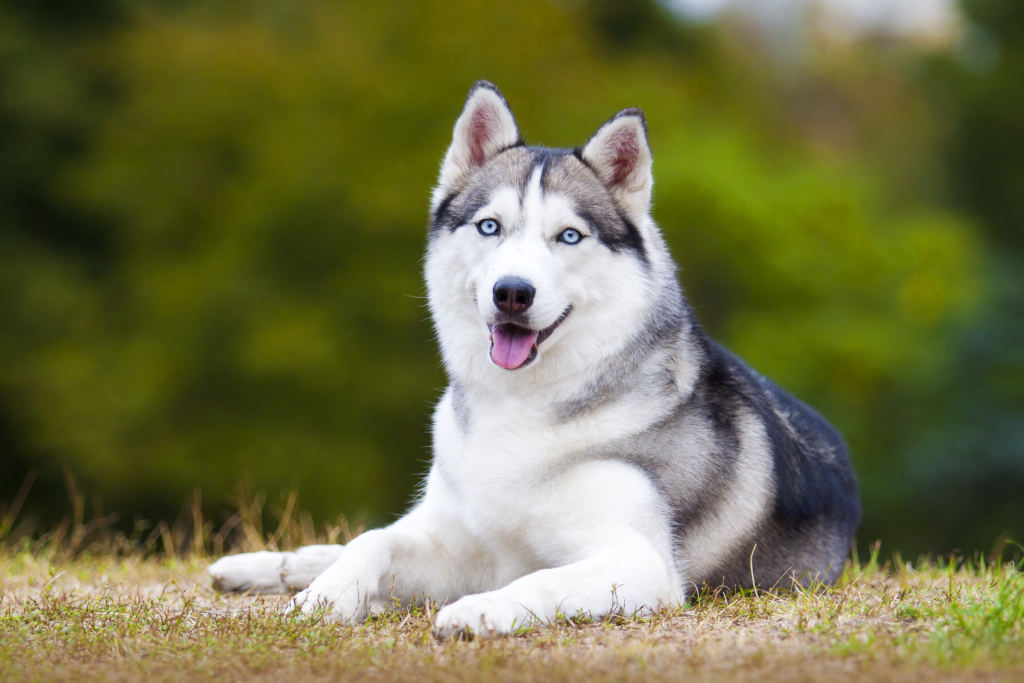
Siberian Husky
The Siberian Husky is a medium-sized working dog breed that presents an athletic and balanced body structure. Characterized by a robust build, they typically stand between 20 to 23.5 inches at the shoulder. Males typically weigh between 45 and 60 pounds, while females hover between 35 and 50 pounds.
Their coat, which acts as a protective barrier against frigid temperatures, is medium-length and dense, with a softer undercoat that sheds seasonally. A myriad of colors and patterns can grace a Siberian Husky, with common shades ranging from black and white, agouti and white, red and white, gray and white, sable and white, to solid white and solid black.
One of the most enchanting features of the Siberian Husky is its almond-shaped eyes, which can be blue or brown. It’s not uncommon for Huskies to have heterochromia, where each eye is a different color.
Key Takeaways: Medium-sized, weighs between 35 to 60 pounds, medium-length dense coat with various colors, and can have a unique eye color combination.
Wolf
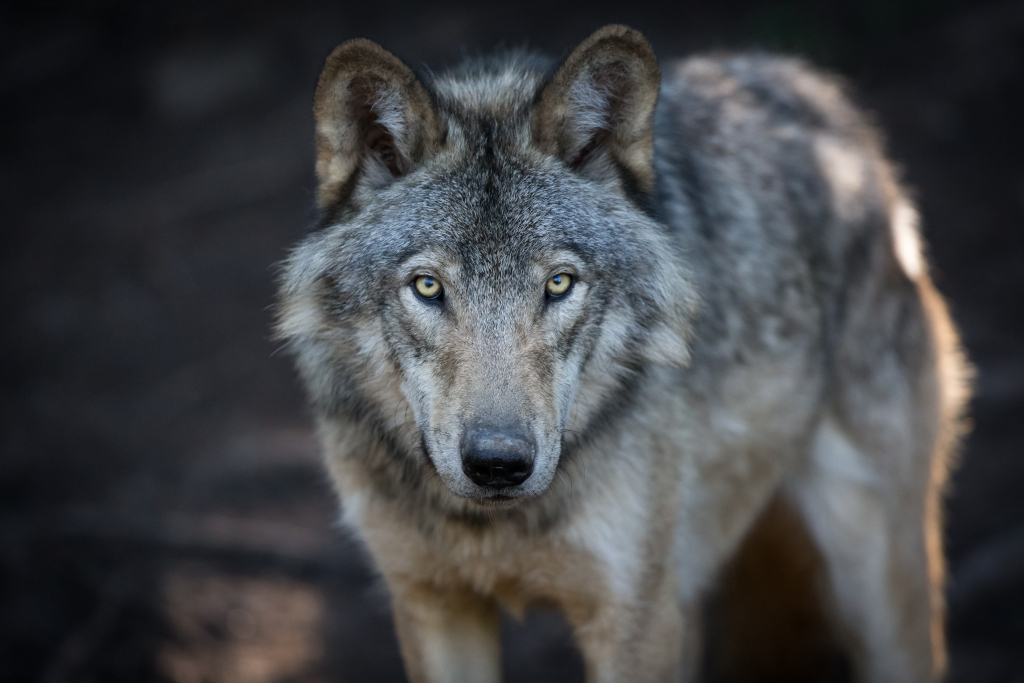
Wolves, specifically gray wolves, are the largest members of the canine family.
Typically, adult male wolves measure around 26 to 32 inches at the shoulder, considerably taller than the Siberian Husky. Their weight can vary significantly based on their habitat and subspecies, but it generally ranges from 70 to 145 pounds for males and 60 to 100 pounds for females.
The wolf’s coat is thick and coarse, designed to offer protection from harsh weather conditions. Their coloration is diverse, with possibilities spanning from pure white in Arctic regions to mixtures of grays, browns, and blacks in forested areas.
In terms of facial features, wolves have broader heads, larger muzzles, and longer teeth compared to Huskies. Their eyes are typically amber or yellowish, but shades can vary based on the individual and region.
Key Takeaways: Larger than the Husky, weighs between 60 to 145 pounds, has a thicker coat, and predominantly amber or yellowish eyes with a broader head, larger muzzle, and longer teeth.
Temperament Differences
Siberian Husky
Huskies are known for their friendly and gentle temperament. Despite their wolf-like appearance, they are often affectionate and good-natured, making them unsuitable as guard dogs since they tend to be friendly even with strangers.
They possess a high level of intelligence, which, combined with their independent nature, can sometimes be mistaken for stubbornness.
Huskies are inherently social animals. Originating from pack-oriented tasks, they thrive in the company of humans and other dogs.
However, this also means that they can suffer from separation anxiety if left alone for extended periods. Due to their high energy levels and curious nature, Huskies require consistent training, early socialization, and ample physical activity to prevent destructive behaviors.
One notable characteristic of Siberian Huskies is their vocal nature. Rather than barking, they are known for “talking” through howls, yips, and other unique sounds.
Key Takeaways: Friendly and gentle, often sociable with strangers. Independent yet intelligent, they require regular socialization and exercise. They communicate using a variety of vocalizations, including unique howls.
Wolf
In the wild, wolves are complex creatures with intricate social dynamics. They are naturally wary of humans, which is a result of survival instincts and less about inherent aggression. Wolves operate on a pack mentality, with a clear hierarchical structure often led by an alpha male and female. This hierarchical system is crucial for hunting, territory defense, and social interaction.
Contrary to popular belief, wolves aren’t overly aggressive by nature. Instead, they are strategic, often opting for retreat over confrontation unless threatened or provoked. Communication within a wolf pack is sophisticated, utilizing body language, vocalizations, and scent marking to convey messages and establish territories.
In terms of intelligence, wolves are exceptionally astute. Their survival in the wild relies heavily on problem-solving skills, teamwork, and the ability to adapt to changing circumstances and environments.
Key Takeaways: Wary of humans due to survival instincts. Operate on a pack hierarchy with complex social dynamics. Typically avoid confrontations and rely on strategic communication methods and high intelligence for survival in the wild.
Dietary Needs
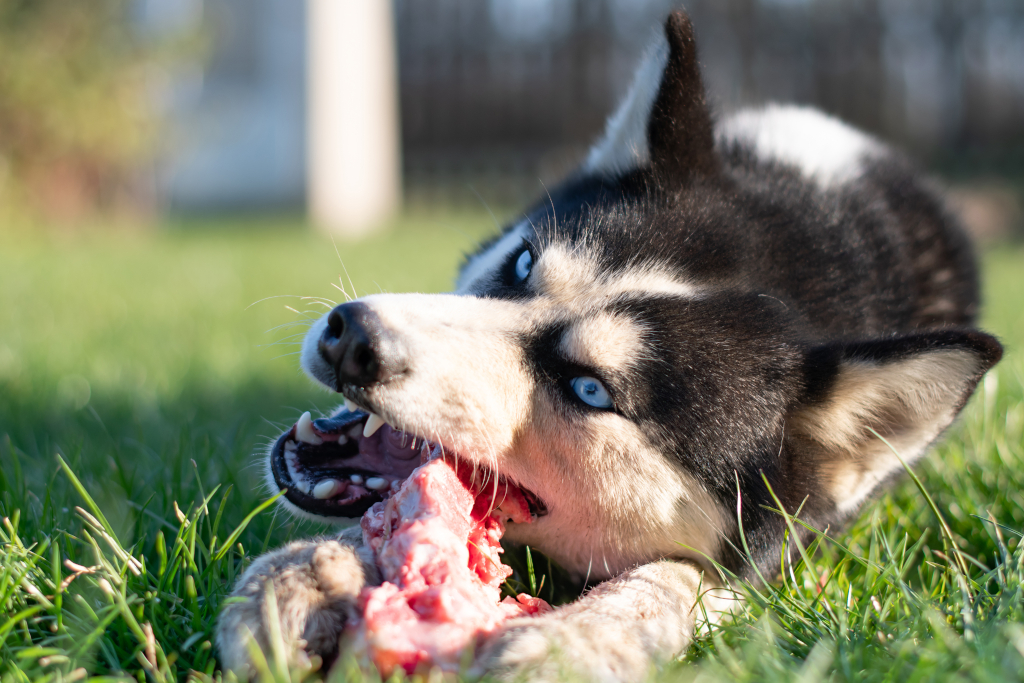
Siberian Husky
Huskies have a metabolism that’s different from many other breeds, allowing them to process food efficiently and generate sustained energy. Historically, when working in cold climates, they consumed a high-fat, high-protein diet, which provided the required energy for their arduous tasks.
For today’s domesticated Husky, a balanced diet is essential. High-quality commercial dog foods that list meat as the primary ingredient are best suited for this breed. Given their efficient metabolism, they usually require less food than one might assume based on their size.
It’s vital to monitor a Husky’s weight and adjust food portions accordingly, as they can be prone to obesity if overfed, especially if they aren’t receiving adequate exercise.
Occasional inclusion of fish, lean meats, and certain fruits and vegetables can be beneficial. However, it’s always crucial to ensure any added foods are safe for canine consumption.
Key Takeaways: Requires a balanced diet with high-quality commercial dog food. Despite their size, they often need less food due to their efficient metabolism. Monitoring weight and ensuring a mix of protein and fats is crucial.
Wolf
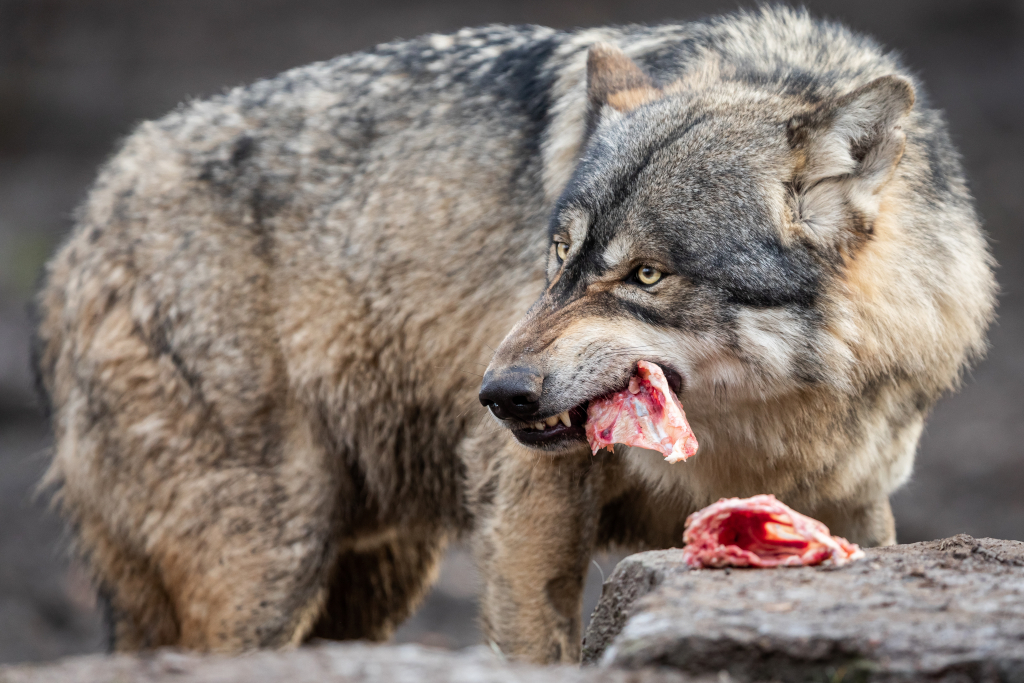
In the wild, the gray wolf is a carnivore at the apex of the food chain. Their diet primarily consists of ungulates (large hoofed mammals) like deer, elk, and moose. However, based on availability, they can also consume smaller mammals, such as hares, beavers, and rodents.
Wolves have a feast-and-famine diet. After a successful hunt, they can consume up to 20 pounds of meat in a single meal. This is followed by periods where food might be scarce.
In addition to meat, wolves occasionally eat fruits, berries, and vegetables, especially when meat is harder to come by. This omnivorous flexibility helps them adapt to different environments and seasons. Their dietary habits are a testament to their survival skills, adjusting based on prey availability and environmental conditions.
Key Takeaways: Primarily carnivorous, feasting on large ungulates and smaller mammals. Their diet can also include fruits and vegetables, with consumption patterns adjusting based on environmental factors and prey availability.
Habitat and Lifestyle
Siberian Husky
The Siberian Husky’s origins in the cold Siberian tundra have shaped their comfort with chilly environments, but they are remarkably adaptable to various climates. As long as they receive proper care, shade, and hydration, they can live happily in warmer regions as well.
In a domestic setting, Huskies thrive on companionship and activity. They are not suited for confinement or extensive time alone, as their social and energetic nature demands interaction and exercise. Their curious temperament necessitates a secure yard and regular mental stimulation to prevent escape attempts or destructive behavior.
Huskies are popular in many urban and suburban settings and do best with families who can provide ample space for running and play. Regular exercise, social interaction with humans and other dogs, and engaging activities keep them healthy and content.
Key Takeaways: Siberian Husky: Adaptable to various climates but thrives with social interaction and physical activity. Suitable for families with space for exercise and play, they require secure containment and mental engagement.
You May Also Like: 8 Types Of Fences to Keep Your Dog From Escaping
Wolf
Wolves are creatures of the wild, spanning across diverse habitats, from the icy tundras of the Arctic to the dense forests of North America and Eurasia. Their territory can be vast, sometimes covering hundreds of square miles, depending on prey availability and their pack size.
Life in the wild demands constant vigilance. Wolves are territorial animals, often marking and defending their territories from other wolf packs. They live and operate as a pack, a complex social unit that hunts, raises offspring, and defends its domain collectively. The hierarchical structure of the pack ensures efficiency in hunting and survival.
Their nomadic lifestyle involves traveling great distances in search of prey, establishing temporary dens for rearing young, and continually monitoring and defending their territory.
Key Takeaways: Inhabits diverse wild terrains and is a territorial animal living within a pack structure. Their vast territories are determined by prey availability and pack size.
Are Huskies Related to Wolves?
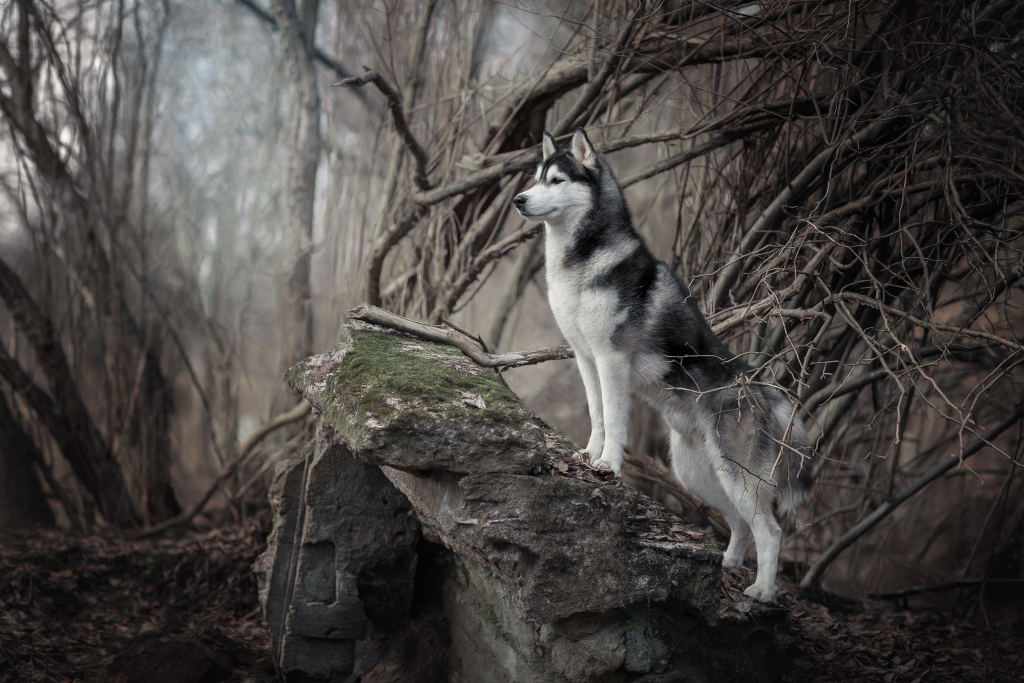
The enigmatic gaze of the Siberian Husky, combined with its wolf-like appearance, often prompts a tantalizing question: Are Huskies closely related to wolves? While the resemblance is undeniable, understanding their connection requires delving into the annals of canine evolution.
As mentioned earlier, all domestic dogs, including the Siberian Husky, trace their lineage back to a common wild ancestor.
This evolutionary journey began between 20,000 to 40,000 years ago when humans began to domesticate the first wolves. Over countless generations, selective breeding led to the emergence of various dog breeds, and each adapted to specific tasks or environments.
The Siberian Husky, with its roots in the cold regions of Siberia, was bred by the Chukchi people. Their primary role was sled-pulling and companionship in these harsh climates.
While their lineage was meticulously shaped to serve these functions, their genetic divergence from the wolf took place much earlier in the broader timeline of canine evolution.
In terms of behavior, while Siberian Huskies might exhibit some wolf-like traits such as howling or a strong pack mentality, they have been bred for generations to work alongside humans, making them more docile and cooperative than their wild counterparts.
Note: Although the Siberian Husky and the wolf share a distant ancestral link, they are distinct entities. The Husky's wolf-like appearance is a nod to its ancient lineage, but its temperament and physical attributes have been shaped by thousands of years of domestication and selective breeding.
Wolf-Dog Hybrids
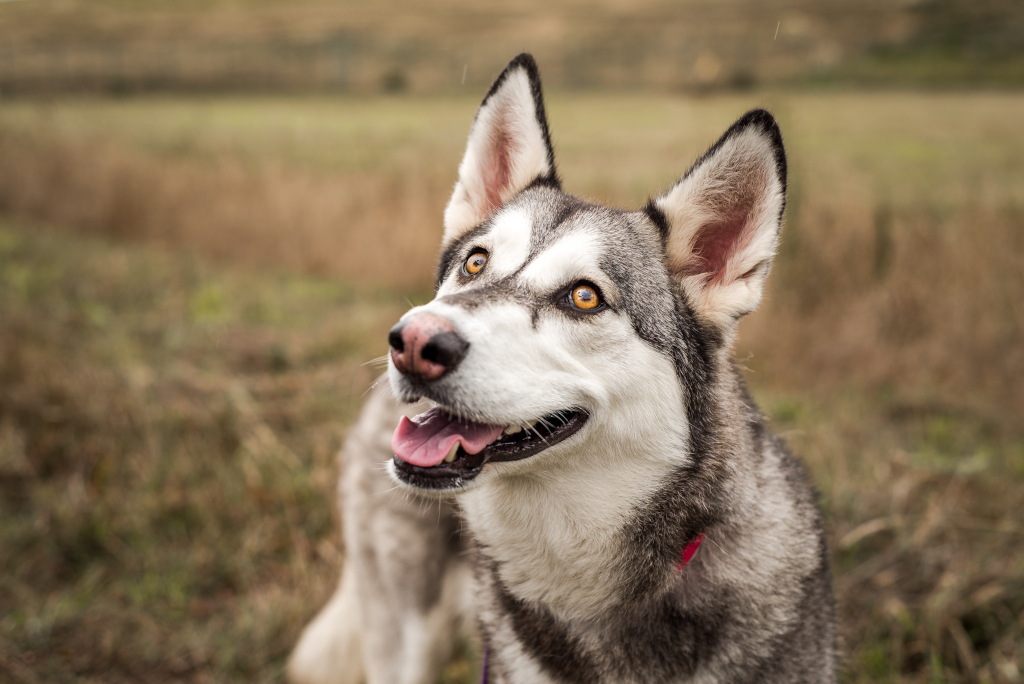
The fusion of the domestic and wild worlds, wolf-dog hybrids, often simply called “wolf-dogs,” represent a fascinating intersection of nature and nurture. Their existence is a testament to the allure of combining the raw, untamed spirit of the wolf with the familiar, trainable nature of domestic dogs.
While the deliberate breeding of wolves and dogs to produce these hybrids is a modern endeavor, the unintentional intermingling of their genes on the edges of human settlements and wolf territories has likely been a quiet occurrence for centuries.
This unintentional crossover, driven by proximity and chance, has given birth to creatures that capture the imagination with their blend of wild and domestic traits.
In terms of appearance, wolf-dogs can be a kaleidoscope of features. Some might tower with the height of a wolf, while others take on the more modest stature of a dog breed.
Their coats can vary extensively in both color and texture, combining patterns familiar to both canines. The eyes, too, offer a spectrum of possibilities, from the amber hues often associated with wolves to the diverse array seen in dogs.
However, the true complexity of a wolf hybrid lies in its temperament. Their behavior can be a patchwork of instincts. Some may lean heavily towards the amiable, eager-to-please nature of dogs. In contrast, others might exhibit the wilder, more independent tendencies inherent to wolves.
This unpredictable blend underscores the importance of early socialization and rigorous training. Without these, the dual nature of their heritage might clash, leading to behavioral challenges.
Yet, owning a wolf-dog hybrid isn’t just about understanding the animal. It also involves navigating the maze of legal and ethical considerations.
Many regions concerned about public safety and animal welfare have imposed stringent regulations or outright bans on their ownership. So if you’re considering taking on a wolf-dog hybrid as a pet, be sure to research and familiarize yourself with the laws in your area.
Can Wolves be Domesticated?
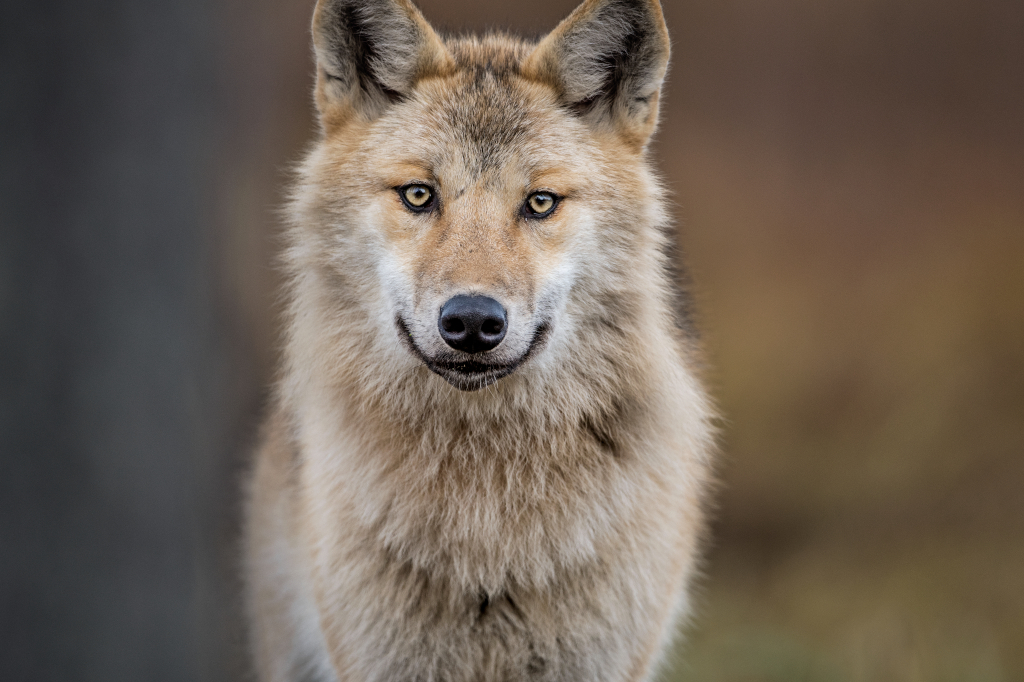
The concept of domesticating wolves stirs the imagination, giving rise to visions of a wild spirit becoming a household companion. But is it genuinely feasible to domesticate these iconic predators? The distinction between taming and true domestication is crucial in addressing this question.
Domestication is a prolonged process that unfolds over numerous generations. It involves selective breeding of animals for specific traits that make them more amenable to coexisting with humans.
For example, the domestic dogs we know today are the result of thousands of years of controlled breeding, evolving from their wild wolf ancestors into the myriad breeds and mixes we’re familiar with.
Contrastingly, taming pertains to the training of an individual animal, not an entire species or breed, to cohabit or interact with humans in a controlled manner. An animal might be tamed within its lifetime but still retains its wild instincts. Its offspring will not inherit this tamed behavior and would need to be tamed individually.
While there have been instances where wolves were raised by humans and exhibited tamed behavior, these animals remain fundamentally wild.
Their predatory instincts, territorial behaviors, and social structures are deeply ingrained and not easily overridden by human influence. The unpredictability that comes with these instincts can pose genuine challenges and potential risks when trying to integrate them into a domestic setting.
Furthermore, the ethical implications of attempting to domesticate wolves are significant. Removing these animals from their natural habitats or breeding them in captivity can lead to numerous welfare issues.
Wolves have intricate social structures, communicate in complex ways, and require vast territories — all needs that are challenging, if not impossible, to meet in a typical household or even sanctuary setting.
In essence, while individual wolves might be tamed to a certain degree, true domestication — altering their very nature to be more in line with human living — is a process that would take countless generations, if it’s even achievable at all.
It’s crucial to recognize and respect the wild essence of the wolf, understanding that its place is not within our homes but in the vast expanses of wilderness where it has roamed for millennia.
Common Myths Debunked
Myth 1: Huskies are half-wolves.
Fact: While Huskies share a common ancestor with wolves and retain some wolf-like appearances, they have been domesticated and selectively bred for thousands of years. They are distinct from wolves and are not “half-wolf.”
Myth 2: Wolves make great pets if raised from pups.
Fact: Regardless of when they’re taken in, wolves remain wild animals with deeply ingrained instincts. They have complex needs that are nearly impossible to meet in a domestic setting, making them unsuitable as household pets.
Myth 3: Huskies are the most wolf-like in behavior among all dog breeds.
Fact: While Huskies may exhibit some wolf-like behaviors, such as howling, they have distinct temperaments shaped by domestication and selective breeding. Other breeds, like the Alaskan Malamute or the Czechoslovakian Wolfdog, may exhibit behaviors as close or even closer to wolves.
Final Thoughts
The enthralling world of Siberian Huskies and wolves presents a tapestry of shared ancestry, physical traits, and captivating behaviors. Yet, while their ancient connection is undeniable, it’s crucial to recognize the distinctions forged by time, environment, and human intervention.
Huskies, though reminiscent of their wild counterparts, have been tailored through thousands of years to be our companions and workers, fitting seamlessly into human habitats. Wolves, on the other hand, embody the raw spirit of the wild, playing a pivotal role in natural ecosystems and commanding respect and understanding in their own right.
Unraveling the intricate relationship between Huskies and wolves is more than just an exploration of biological ties; it’s a journey that offers insights into nature, domestication, and our own history of coexistence with these remarkable canines.
As we move forward, it’s essential to approach both species with informed perspectives, ensuring that myths and misconceptions don’t overshadow the true essence of these magnificent creatures.
In the end, whether we’re drawn to the loyal gaze of a Husky or the untamed allure of a wolf, our responsibility is to cherish, protect, and understand them, celebrating the unique stories they bring to the grand narrative of life on Earth.
Frequently Asked Questions About Wolf vs. Husky
Q1. Is a wolf stronger than a Husky?
Yes, wolves are generally stronger and larger than Huskies. This strength difference stems from their roles in the wild as predators needing power and endurance to hunt and survive, compared to Huskies, which have been bred mainly as sled dogs.
Q2. Can a Husky fend off a wolf?
While Huskies are robust and agile dogs, defending against a wild wolf would be challenging for them. Wolves are not only stronger but also have a pack mentality, often engaging in coordinated hunting or defense strategies. It’s unlikely that a Husky could fend off a wolf, especially if the wolf perceives it as a threat or competition.
Q3. Why do Huskies look so much like wolves?
Huskies and other northern dog breeds retain several physical characteristics of their ancient wolf ancestors, likely due to their environmental challenges and relatively recent domestication compared to some other breeds. This includes their coat color, eye shape, and overall body structure, which are adaptive to cold environments.
Q4. Can Huskies and wolves interbreed?
Yes, Huskies and wolves can interbreed, producing wolf-dog hybrids. However, breeding such hybrids comes with a host of ethical, behavioral, and legal concerns.
Q5. Are Huskies as wild as wolves?
No, Huskies are domesticated dogs with temperaments shaped by thousands of years of breeding to work alongside humans. While they might display certain wolf-like behaviors, such as howling, they are generally more docile and adaptable to human living than wild wolves.
Q6. Is it easier to tame a wolf or train a Husky?
Training a Husky is far more straightforward than taming a wolf. Huskies have been bred for cooperation with humans over generations, while wolves possess wild instincts that make them unpredictable when brought into domestic settings.
Q7. Do Huskies and wolves have similar diets?
No. In the wild, wolves are carnivorous predators, relying mainly on larger prey. Huskies, as domesticated dogs, have had their diets diversified over the years, including both animal proteins and other foodstuffs.
Q8. How do the lifespans of Huskies and wolves compare?
In general, domesticated animals tend to live longer than wild animals due to controlled diets, medical care, and lack of natural predators. Siberian Huskies typically live between 12-14 years, while wild wolves have an average lifespan of 6-8 years, though it can vary based on numerous factors.

